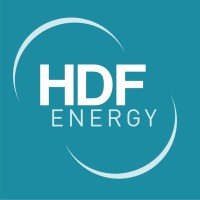Lower cost, feed-in-tariffs can underpin Asian hydrogen demand: ERIA
Hydrogen can be produced from fossil-based fuel using carbon capture technologies

Hydrogen will play an important role in achieving carbon neutrality in the long term, but there are many challenges to benefit from hydrogen, concluded in the Economic Research Institute for ASEAN and East Asia (ERIA) working group meeting on Tuesday (13th April).
The meeting discussed whether hydrogen would contribute to carbon neutrality as a long-term policy and to work out how to use hydrogen similar to a scale of oil and gas.
Mr Koji Hachiyama, COO of ERIA, said, “Hydrogen technology, in particular, should play a key role as an alternative to fossil fuels and can be applied across sectors not only in industry but also in power generation and transportation.”
He said that new energy technologies such as carbon capture usage and storage (CCUS) or carbon recycling and hydrogen should be used to drive decarbonisation.
Mr Shigeru Kimura, ERIA’s Special Advisor on Energy Affairs, stated that hydrogen should be employed in both power and transport sectors as currently coal and fossil fuels are used across Asean. However, he pointed out that presently hydrogen production costs are around US$ 10/kg which is unaffordable. Innovative technologies need to be used to cut it down to a competitive rate of around US$ 2-3/kg to stimulate demand.
Dr Saleh Abdurrahman, Expert Staff for the Minister of Energy and Mineral Resources of Indonesia, said, “The role of hydrogen is very significant to achieve our targets. We can produce hydrogen from either gas or [c]oal with carbon capture and storage (CCS) or ‘green hydrogen’ with hydro, geothermal, biomass and others.”
Dr Joko Purwanto, ERIA Energy Economist, said, “The working group members agreed on the important role of hydrogen in achieving carbon neutrality as a long-term strategy but at the same time recognised many issues and challenges regarding high utilisation of hydrogen.”
ERIA initiated the EAS Hydrogen Working Group in 2019 as a platform for EAS countries to understand hydrogen demand, supply, and supply chain progress in the region. The meeting was attended by Australia, Brunei Darussalam, China, India, Indonesia, Japan, Malaysia, New Zealand, and Thailand. The participating countries presented their current progress on hydrogen production, consumption and national policies on hydrogen and decarbonisation efforts.
The participants highlighted that increasing hydrogen consumption could be increased through governmental Feed-in-Tariffs (FIT) support. Others suggested setting an initial target to start co-firing gas-hydrogen power generation at existing gas power plants beginning with 5% around 2030.
